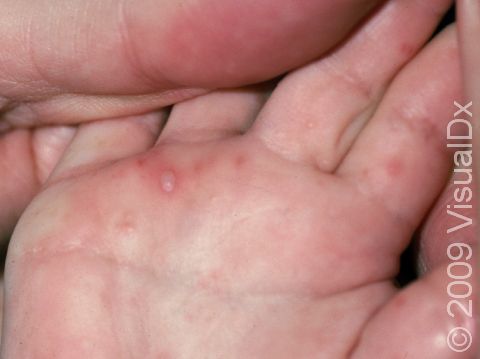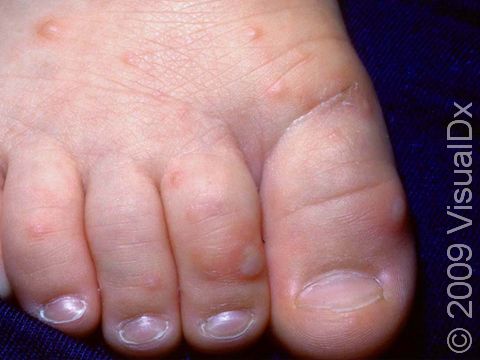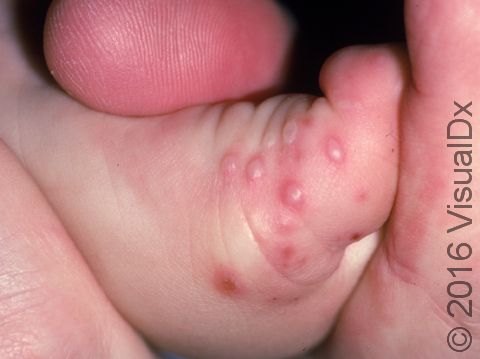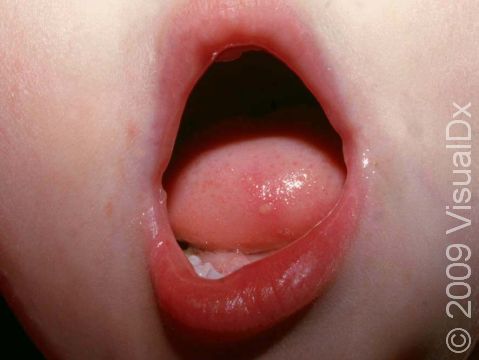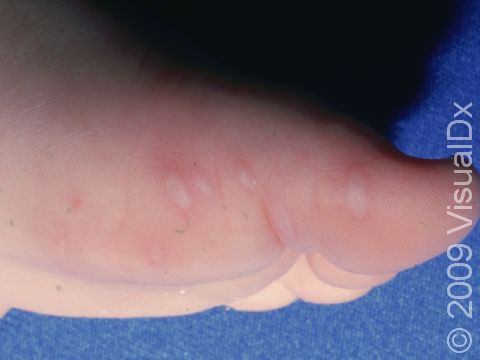Hand, Foot, and Mouth Disease
Hand, foot, and mouth disease is a common illness in infants and children. In infants, it starts with fever, fussiness, and a poor appetite. Within 2-3 days, painful sores develop in the mouth. A skin rash can also develop shortly after the appearance of the mouth sores, usually on the hands and soles of the feet. Hand, foot, and mouth disease typically appears quickly and goes away on its own without any treatment, usually lasting for 7-10 days. Hand, foot, and mouth disease is a viral illness of the enterovirus group, particularly coxsackieviruses. This virus is highly contagious and is spread from person to person by direct contact with secretions from the nose or mouth or from stool. Outbreaks of hand, foot, and mouth disease occur most frequently in summer and early fall.
Who's At Risk?
While anyone can be infected with the virus that causes hand, foot, and mouth disease, children younger than age 10 years most commonly display symptoms of the disease. Infants do not usually become infected more than once because they develop immunity to the disease from the first infection, but because there are multiple viruses that cause hand, foot, and mouth disease, the child may still develop similar symptoms from a related virus. Infants in day care often spread it to one another.
Signs & Symptoms
Hand, foot, and mouth disease begins with a fever, sore throat, sore mouth, cough, headache, fatigue, loss of appetite, and occasionally joint pain. After 1-2 days, a rash appears.
Initially, red macules (small, smooth, flat spots) develop in the lining of the mouth and on the tongue, gums, and/or throat, which develop into vesicles (small fluid-filled bumps) and rapidly form erosions (open sores). Then, oval or football-shaped blisters surrounded by a red ring appear on the hands, feet, and groin. These may be painful. Lesions on the hands and feet typically appear on the sides and backs of the fingers and toes. The palms and soles may also be affected.
In about a week, the rash will disappear and your baby will start to feel better.
Self-Care Guidelines
Hand, foot, and mouth disease is a self-limited viral infection, meaning it will go away on its own, and the only treatment needed is aimed at improving the symptoms. Acetaminophen (Tylenol) or ibuprofen (Advil, Motrin) may be used for fever and pain. Be sure your baby drinks plenty of fluids to stay well hydrated.
Note that the virus may be present in the baby’s stool for about a month. Help avoid passing the infection to others by washing your hands frequently, particularly after using the bathroom, doing diaper changes, and before eating.
Although most pregnant individuals who become infected with hand, foot, and mouth disease have no symptoms or just a mild illness, the disease can be passed along to a newborn during delivery, which could make the baby very ill. So anyone infected with hand, foot, and mouth disease should avoid contact with pregnant individuals, particularly those in late pregnancy.
Treatments
If the medical professional is concerned that the baby might be infected with streptococcus bacteria (strep infection), they may perform a throat culture.
Antibiotics do not help hand, foot, and mouth disease. Usually, the medical professional will recommend that you give the baby fluids and something to relieve the pain.
Visit Urgency
See your baby’s medical professional if you suspect hand, foot, and mouth disease, if your baby has a high fever or appears very ill, or for any new sores in the mouth and/or a painful rash.
Trusted Links
References
Bolognia J, Schaffer JV, Cerroni L. Dermatology. 4th ed. Philadelphia, PA: Elsevier; 2018.
James WD, Elston D, Treat JR, Rosenbach MA. Andrew’s Diseases of the Skin. 13th ed. Philadelphia, PA: Elsevier; 2019.
Kang S, Amagai M, Bruckner AL, et al. Fitzpatrick’s Dermatology. 9th ed. New York, NY: McGraw-Hill Education; 2019.
Paller A, Mancini A. Paller and Mancini: Hurwitz Clinical Pediatric Dermatology. 6th ed. St. Louis, MO: Elsevier; 2022.
Last modified on May 23rd, 2023 at 4:50 pm

Not sure what to look for?
Try our new Rash and Skin Condition Finder
